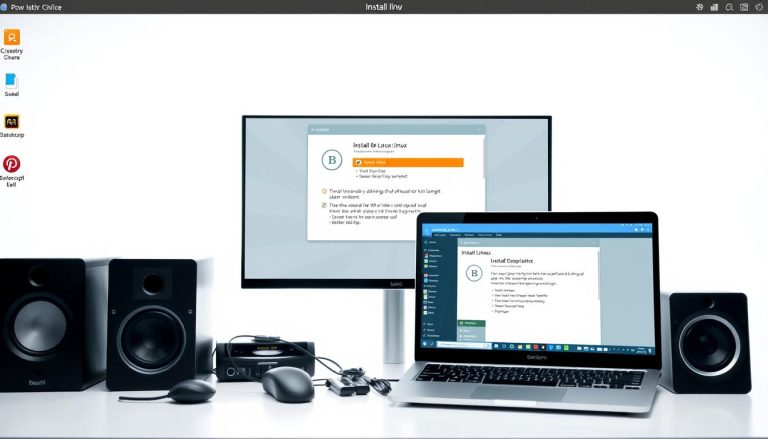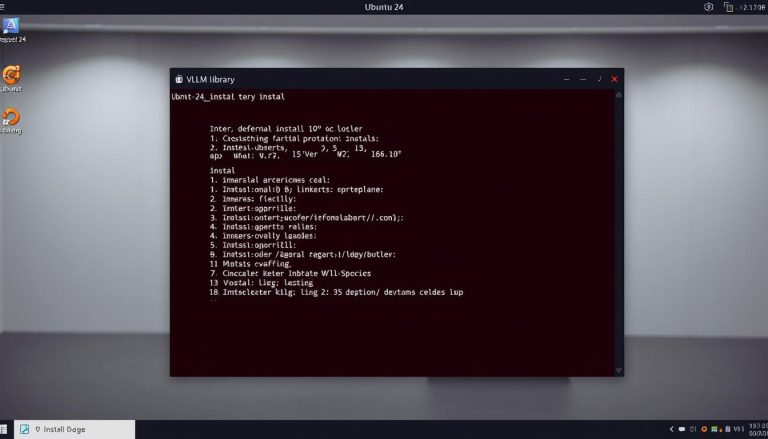We Explore the Best AI Model for Coding 2025: Features & Benefits
Is there truly a single, superior intelligence that can handle every programming challenge you throw at it? The landscape of automated assistance for software creation is evolving at a breathtaking pace. Multiple advanced systems now compete to boost productivity and streamline development workflows.
We explain how the ideal solution depends heavily on specific use cases, programming languages, and project requirements. It is not a one-size-fits-all scenario. Our goal is to cut through the noise and provide a clear, actionable analysis.
We outline the key evaluation criteria used to assess leading options. This includes code generation accuracy, debugging capabilities, and context understanding. We also consider multimodal features and cost efficiency for teams.
This guide sets expectations for what professionals and enterprises can gain from implementation. Benefits range from accelerated development cycles to improved code quality. Understanding both the capabilities and limitations is crucial for making informed decisions.
Key Takeaways
- The ideal coding assistant depends on your specific project needs and programming language.
- Leading systems are evaluated on accuracy, debugging, and understanding of context.
- Productivity gains include faster development and higher quality output.
- Key players like Claude, ChatGPT, and Gemini offer different strengths.
- Successful implementation requires understanding both the power and the limits of these tools.
- Practical testing across real-world tasks provides the most reliable insights.
Overview of AI Coding Trends in 2025
Today’s development environment features sophisticated systems that handle complex coding tasks. We observe a competitive landscape where major providers pursue distinct strategies to meet diverse needs.
Market Evolution and Technological Advances
The programming assistance market has transformed dramatically. Simple autocomplete tools have evolved into multi-agent systems capable of managing entire workflows.
OpenAI focuses on personal assistance with consumer market dominance. Anthropic’s Claude targets enterprise solutions as the default for Cursor IDE. Google’s Gemini emphasizes cost-effectiveness with strong multimodal capabilities.
Technological advances enable these systems to understand complex codebases. They maintain context across files and generate production-ready code with minimal intervention.
Changing Developer Needs and Workflow Integration
Modern developers expect comprehensive integration beyond basic syntax help. Their needs now include debugging, security scanning, and automated test generation.
These tools must seamlessly connect with existing IDEs and version control systems. Workflow integration occurs without disrupting established development practices.
Privacy and security features have become increasingly important. Enterprise environments require confidentiality and compliance with regulatory standards.
Comparative Analysis: Claude 4, ChatGPT O3, and Gemini 2.5
The comparative assessment demonstrates that no single solution dominates across all coding scenarios. We evaluated these three leading systems through practical testing to understand their real-world capabilities.
Testing Methodologies and Use Cases
Our testing involved six practical use cases spanning different development needs. We focused on real-world scenarios that professionals encounter daily.
The Tetris challenge revealed significant differences in code quality. Each system received identical instructions to create a full-featured game with polished graphics.
Claude delivered a complete implementation with scoring and controls. Gemini 2.5 produced functional but less refined results. The third option created basic working versions.
Performance Metrics and Key Findings
When challenged with a Mario game creation task, Claude excelled dramatically. After iterative development, it produced a playable level with proper game mechanics.
The other systems couldn’t match this complex implementation. However, cost efficiency presents a crucial consideration for developers.
Claude’s superior performance comes at a premium price point. Gemini 2.5 offers remarkable value for budget-conscious teams. Each system serves different development needs effectively.
Features and Capabilities of Leading AI Models
Today’s most effective programming tools combine professional development environments with intelligent assistance. These platforms integrate three essential components that work together seamlessly.
The first component provides full-featured IDE capabilities with debugging and version control. The second offers contextual interaction through chat and commands. The third integrates powerful language processing that understands both natural language and programming syntax.
Code Generation and Debugging Strengths
Intelligent code completion represents a significant advancement. These systems can predict entire functions and suggest optimal algorithms based on project context.
Debugging capabilities extend beyond basic syntax checking. They provide real-time error detection with actionable fix suggestions. This saves developers substantial troubleshooting time.
Multimodal Capabilities and Context Understanding
Modern tools process screenshots and diagrams alongside text. This allows developers to describe UI requirements visually. They can debug layout issues by showing the system what’s wrong.
Context understanding features include intelligent codebase indexing. The tool maintains awareness across multiple files. This ensures suggestions align with existing architecture and styling conventions.
Real-World Application Examples
Practical applications demonstrate the value of these systems. Automated test generation creates comprehensive test suites covering edge cases. Documentation writing produces clear technical documentation from code analysis.
Terminal command generation translates natural language into proper shell commands. As highlighted in our comparative analysis, different platforms excel in specific areas based on their unique feature sets.
Cost Efficiency and Pricing Considerations
Budget considerations often determine which intelligent development tools teams can effectively utilize. We examine three primary pricing approaches available to developers.
Flat-rate subscriptions provide predictable monthly costs but raise sustainability questions. Credit-based systems offer optimal cost-per-token ratios with potential transparency issues. Bring-your-own-API-key options provide flexibility but can escalate expenses rapidly in team environments.
Premium Versus Budget Models
Claude 4 Sonnet costs approximately twenty times more than Gemini 2.5 Flash. This premium pricing delivers superior code quality and feature completeness for complex projects.
Budget-conscious developers find Gemini 2.5 offers remarkable value without sacrificing reasonable functionality. The choice depends on project complexity and quality requirements.
Local deployment support appears compelling but requires technical skills for comfortable teamwork. Each pricing model serves different organizational needs effectively.
Return on Investment for Enterprises
Enterprise teams should evaluate tools based on long-term productivity gains. Premium options can reduce development time and improve code quality significantly.
These systems decrease debugging efforts and accelerate time-to-market despite higher upfront costs. The return on investment becomes clear through sustained usage over several months.
We recommend Claude 4 when advanced features justify the premium. Gemini 2.5 serves well when cost efficiency remains the primary concern.
Coding Performance: From Tetris to Mario Level 1
Our practical testing reveals dramatic differences in how these systems handle complex game development challenges. We evaluated their capabilities through two distinct coding demonstrations that pushed their limits.
Detailed Walkthrough of Coding Demos
The Tetris challenge began with identical instructions to create a full-featured game. Claude delivered a polished implementation with scoring, next-piece previews, and smooth controls. This demonstrated superior code generation for complex projects.
ChatGPT O3 produced a basic but functional clone that lacked refinement. Gemini 2.5 created a solid game without the visual polish. The results showed clear performance tiers in coding quality.
When challenged with Mario Level 1 creation, Claude excelled through iterative development. After 10-15 minutes of back-and-forth, it built a playable game with authentic mechanics. This included proper collision detection and character interactions.
Performance under Real-Time Scenarios
Real-time testing revealed how each system manages complex game logic. Claude handled sprite management and physics calculations effectively. The other options struggled with the same level of sophistication.
These demonstrations have practical implications for developers choosing tools. Complex projects benefit from premium performance, while simpler tasks may not require top-tier capabilities. Understanding your project framework helps determine the right fit.
The testing process saved significant development time by identifying strengths early. Teams can make informed decisions based on their specific coding requirements and quality standards.
Writing and Editing Proficiency Using AI
Beyond generating functional programs, these intelligent systems demonstrate remarkable proficiency in technical writing and editing tasks. They assist with documentation, strategy documents, and communication pieces that require clear expression.
The editing process begins when developers provide samples of their best writing. The system learns individual style preferences from these examples. It then applies this understanding when editing new drafts.
Capturing Personalized Writing Styles
Our testing revealed significant differences in how each system handles editing. When given identical newsletter content to refine, Claude successfully captured conversational tone and proper formatting.
It maintained the author’s distinctive voice while improving clarity. This makes it particularly effective for technical documentation and blog posts.
Edit and Format Efficiency
ChatGPT tended to over-compress content, removing important details in pursuit of conciseness. This resulted in loss of critical nuance that professionals need to preserve.
Gemini 2.5 produced verbose and sterile edits. It added unnecessary corporate language that made content feel impersonal.
Claude’s superior style capture provides significant efficiency gains. Developers can focus on technical accuracy while delegating refinement tasks. This improves both productivity and output quality.
Everyday Assistance and the Impact of Memory Features
While all leading platforms handle technical queries effectively, one stands out through its ability to remember and anticipate user needs. Modern programming assistants serve dual purposes as specialized coding tools and everyday productivity platforms.
These systems help developers with general questions, decision-making, and personal productivity beyond pure programming tasks. The most significant differentiator emerges in how they maintain context across conversations.
How Memory Enhances Interaction
ChatGPT’s Memory feature creates remarkable continuity between sessions. It remembers preferences, ongoing projects, and personal details that enable more relevant assistance over time.
This capability produces magical moments during everyday use. For example, the assistant might suggest travel planning for France because it remembered an upcoming trip mentioned previously.
The tool also enables powerful introspection through specific prompts. Users can ask it to identify unique patterns in their behavior or thinking styles they haven’t recognized themselves.
We’re surprised that competing platforms haven’t implemented similar memory features. This gap gives ChatGPT a distinct advantage in creating personalized experiences.
Memory transforms the relationship from transactional queries into ongoing understanding. The assistant progressively learns individual working styles and needs.
We recommend this platform for developers seeking comprehensive assistance. It’s particularly valuable for those who want a tool that truly understands their preferences and can surface hidden talents.
Deep Research and Data Synthesis with AI
Deep research functionality has become a standard feature across leading programming platforms. This capability transforms how developers gather comprehensive information about technologies and market trends.
We tested each system’s research capabilities with a specific market analysis request. The results revealed significant differences in approach and output quality.
Generating Comprehensive Reports
Claude produced a concise 7-page report synthesizing 427 sources effectively. It avoided information dumping but offered generic strategic recommendations.
ChatGPT delivered a 36-page report with 25 carefully selected sources. Its recommendations matched Bolt’s actual strategy of targeting non-technical users and prioritizing integrations.
Gemini created an exhaustive 48-page report drawing from 100 sources. While comprehensive, the verbose presentation reduced practical utility for developers.
Balancing Report Length with Insight Quality
Developers rarely read deep research reports in full. Instead, they skim key sections and load complete reports into projects for context refinement.
ChatGPT delivers the optimal balance for actionable insights. It provides sufficient detail without overwhelming length, making integration into workflows efficient.
The right research tool helps developers maintain code quality while staying informed. This balance ensures technical decisions align with market realities.
Image Generation, Voice Chat, and Video Capabilities Explained
Modern development platforms now extend their functionality well beyond traditional text-based assistance. These systems incorporate multimodal features that enhance the complete developer experience.
Visual Content Creation and AI Integration
One platform excels in image generation by following instructions precisely. It produces excellent text rendering for marketing assets and technical diagrams.
Developers can provide style examples and request specific tweaks. This approach enables consistent visual branding without graphic design expertise.
Voice Personalization and Chat Dynamics
The same platform offers the most natural conversational flow among available tools. Its voice feature includes personality and even amusing singing capabilities.
However, both major platforms tend to interrupt users mid-sentence. Many developers prefer dedicated voice dictation tools for more controlled conversion.
For video generation, one system leads significantly through advanced technology. It transforms simple text prompts into 8-second videos with synchronized sounds.
Video capabilities are positioned for explosive growth in quality and quantity. This advancement will revolutionize how developers create tutorials and documentation.
Live Camera and Computer Use in AI-Powered Coding
We’re witnessing a transformative shift where intelligent systems can now perceive developer screens and manipulate interfaces directly. These capabilities represent significant steps toward autonomous agents in software creation.

Practical Uses in Debugging and Code Review
Live camera functionality allows systems to observe your entire development environment. They can see code editors, terminal outputs, and application interfaces in real-time.
This enables more effective debugging assistance. Developers can activate Gemini’s camera while working and ask for help with visual errors or layout issues.
The system spots console messages and runtime behaviors without detailed descriptions. This context-aware approach responds to what you’re actually seeing on screen.
Computer use features grant control over keyboard and mouse inputs. OpenAI’s Operator tool leverages advanced reasoning to navigate interfaces and execute commands.
This automation handles repetitive tasks under supervision. It can research documentation or even assist with practical activities like travel planning.
Both features remain in early development with occasional limitations. However, they offer valuable glimpses into how agents will transform development workflows.
We encourage curious developers to experiment with these capabilities. They represent important advancements toward fully autonomous coding assistance.
Product Roundup: Top AI Coding Tools for Developers
Our comprehensive review examines the leading programming assistants available to modern development teams. We’ve analyzed numerous solutions that support the entire software development lifecycle.
This product roundup provides a detailed tools list to help professionals select the right assistant for their specific needs. Each solution offers unique features and integration capabilities.
Highlights from Qodo, GitHub Copilot, and Tabnine
Qodo stands out as a complete SDLC platform with specialized agents for generation, testing, and code reviews. It integrates seamlessly into popular IDEs and CI pipelines.
GitHub Copilot remains the most widely adopted coding assistant. Its tight ecosystem integration and multi-language support make it versatile for various projects.
Tabnine excels in intelligent completion and automatic documentation. The enterprise version ensures maximum privacy by keeping code on local servers.
Evaluation of Additional AI Coding Assistants
Bolt offers a unique browser-native approach using StackBlitz WebContainers. Developers can describe applications in plain English and generate them instantly.
Amazon Q Developer focuses on AWS-native architectures with automated testing and security scans. Other notable tools include Warp for terminal enhancement and Replit for collaborative coding.
Our reviews consider syntax assistance, debugging capabilities, and integration compatibility. This evaluation helps developers choose tools that match their workflow requirements.
Workflow and Collaboration: Tools Integration and Efficiency
Modern development teams benefit significantly from tools that enhance collective productivity through seamless integration. These systems must fit naturally into existing development workflow without disrupting established practices.
We focus on how intelligent assistants support team environments through comprehensive compatibility features. The integration process should feel intuitive rather than intrusive.
Team Collaboration Features
Version control integration represents a crucial capability for collaborative development. These tools enhance Git workflows by generating descriptive commit messages automatically.
They also identify potential merge conflicts before they escalate into major issues. This proactive approach saves teams significant troubleshooting time.
Compatibility with popular environments like Visual Studio Code and JetBrains IDEs ensures broad adoption. Developers can maintain their preferred setup while gaining intelligent assistance.
Context management features maintain project knowledge across sessions through memory systems. Multiple file awareness helps teams enforce consistent coding standards.
These collaboration tools streamline the entire development process. They automate repetitive tasks like boilerplate generation and documentation updates.
Enterprise teams particularly value the consistency across different programming languages. The features maintain security and quality standards throughout the project lifecycle.
Insights on Multi-Agent Systems in Modern Coding
The evolution of programming assistance is entering a new phase with multi-agent systems that distribute tasks across specialized components. Instead of relying on a single, general-purpose assistant, these platforms employ multiple specialized agents that communicate and collaborate.
This approach represents a significant advancement beyond traditional tools. Each coding agent focuses on a specific aspect of the development process, creating a more efficient workflow.
Specialized Agents for Different Coding Tasks
Imagine a system where one agent generates code based on specifications while another performs thorough reviews. A third agent might create documentation, and a fourth ensures comprehensive test coverage.
Qodo demonstrates this architecture with purpose-built agents: Gen handles code and test generation, Cover analyzes test coverage, and Merge produces PR summaries and automated reviews. This specialization allows each component to develop deep expertise in its domain.
The process operates under safe guardrails that prevent destructive actions. These systems maintain code quality standards and security protocols while requiring human approval for significant changes.
Ensuring Secure and Efficient Code Reviews
Multi-agent systems transform the review process through automated security vulnerability detection and compliance checking. They enforce best practices and conduct comprehensive quality assessment before human reviewers examine changes.
This approach delivers superior results compared to generalized assistants. Developers can focus on architecture decisions and complex problem-solving while routine tasks handle autonomously.
The potential for overnight development progress represents one of the most exciting possibilities. You might provide specifications before leaving work and return to find significant portions of your workflow completed and ready for review.
While current systems have limitations, their ability to handle routine tasks autonomously already provides substantial value. This specialized approach marks an important step toward more efficient software creation.
Best ai model for coding 2025: Why It Matters
Organizations face a pivotal choice when selecting programming tools that will influence their development capabilities for years to come. The right selection directly impacts team productivity, output quality, and project timelines.
Key Advantages for Developers and Enterprises
These assistance platforms enhance rather than replace human expertise. They handle tasks ranging from simple debugging to complex architectural improvements.
Individual programmers benefit from accelerated coding speed and reduced debugging time. They maintain consistent code quality while exploring unfamiliar languages with intelligent guidance.
Enterprise teams gain standardized practices across departments. They reduce onboarding time for new developers and enhance security through automated vulnerability detection.
The competitive landscape features three exceptional systems pushing rapid innovation. Each serves distinct needs: everyday assistance, professional writing, or budget-conscious video development.
Selection requires careful consideration of project requirements and team expertise. The choice balances immediate needs with long-term strategic goals for sustainable development success.
Future Outlook of AI in Software Development
The landscape of programming assistance is rapidly evolving toward specialized multi-agent architectures that promise unprecedented efficiency. We see distinct trends shaping the next generation of development tools.
Video generation technology is positioned for explosive growth in both quality and quantity. This advancement will transform how developers create tutorials and documentation.
Emerging Trends and Next-Generation Tools
Multi-agent systems represent the dominant architecture for future programming platforms. Specialized agents collaborate to handle complete workflows from design through deployment.
Major platforms like Google have aggressively released new models including Gemini 2.5 Pro and Flash. These tools demonstrate rapid innovation in the development space.
JetBrains recently announced Junie, focusing on task delegation and code quality verification. Live camera capabilities, while early, offer glimpses into autonomous agent functionality.
Increased competition drives down pricing while improving capabilities. This makes sophisticated assistance accessible to developers of all experience levels.
Learning to collaborate effectively with these tools provides significant advantages. Proficiency in prompt engineering and context management becomes essential for modern programming work, similar to mastering automation frameworks.
Conclusion
Developers now have access to sophisticated assistance platforms that transform how software creation workflows operate. Our comprehensive exploration reveals that the optimal choice depends on specific project requirements, budget constraints, and individual development workflow preferences.
Claude 4 delivers superior results for complex projects, while ChatGPT O3 excels in everyday assistance with memory features. Gemini 2.5 offers exceptional value for cost-conscious teams. These tools have evolved beyond simple autocomplete to support the entire development lifecycle.
The diverse tools list we examined—from comprehensive platforms like Qodo and GitHub Copilot to specialized solutions—empowers developers across various programming languages. Emerging features like multi-agent systems and live camera debugging reshape how users interact with these platforms.
We encourage experimentation to discover which combinations complement individual working styles. The competitive innovation among platforms continues driving improvements in capabilities and accessibility, ultimately empowering developers to build better software faster.
FAQ
What are the primary strengths of the leading AI models like Claude 4, ChatGPT O3, and Gemini 2.5 for programming tasks?
How do pricing and cost efficiency compare between premium and budget-friendly coding assistants?
Can these AI tools effectively integrate into a team’s development workflow and collaboration process?
What role do multi-agent systems play in modern software development?
How do features like memory and live camera use impact the coding experience?
What should developers look for when evaluating AI coding tools for their specific needs?
- About the Author
- Latest Posts
Mark is a senior content editor at Text-Center.com and has more than 20 years of experience with linux and windows operating systems. He also writes for Biteno.com






